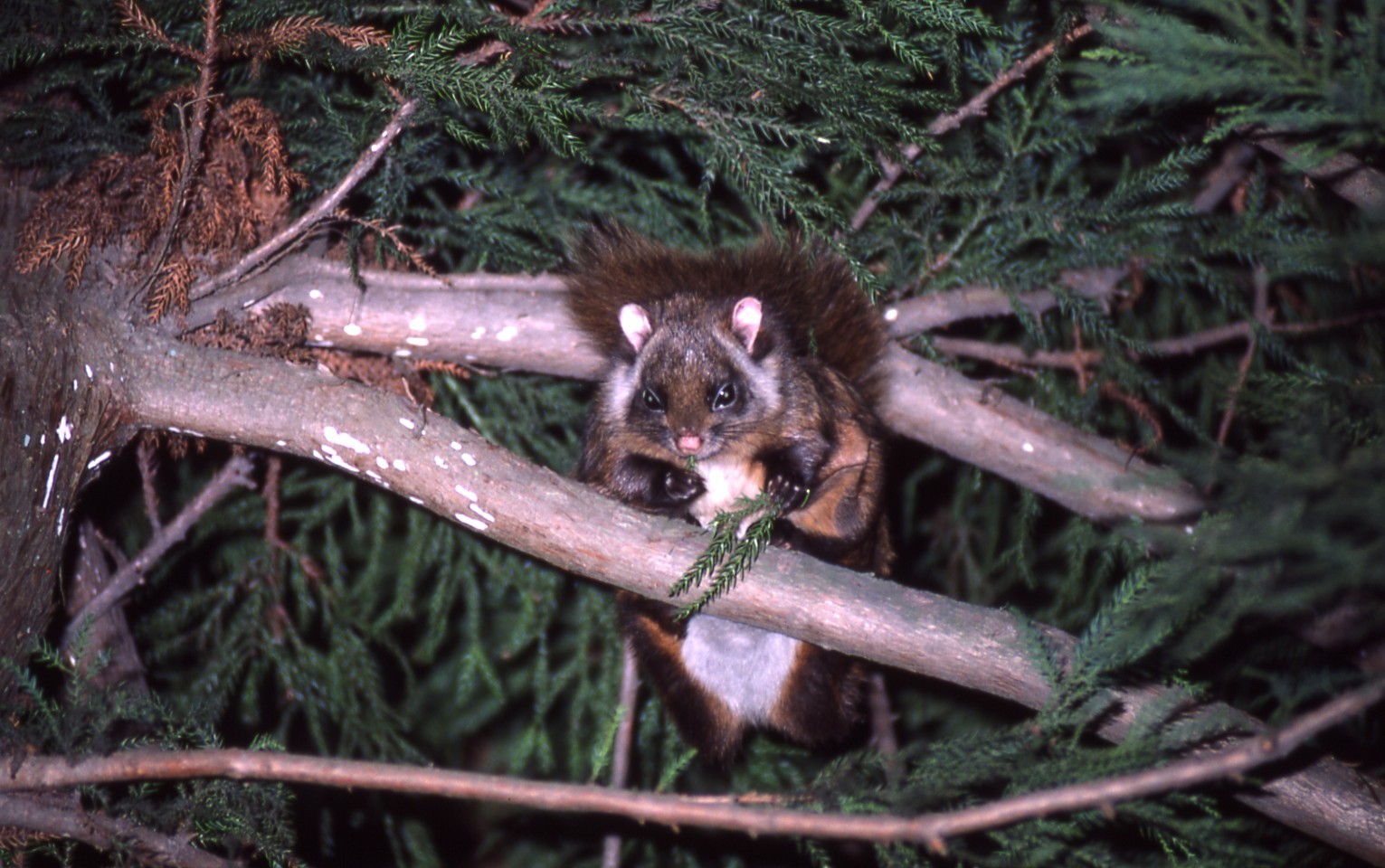Mt. Takao is the home of 28 kinds of mammal, 137 kinds of bird which accounts for some 25% of all the bird life in Japan, 12 kinds of reptile, 12 kinds of amphibian and some 5,000 kinds of insect.
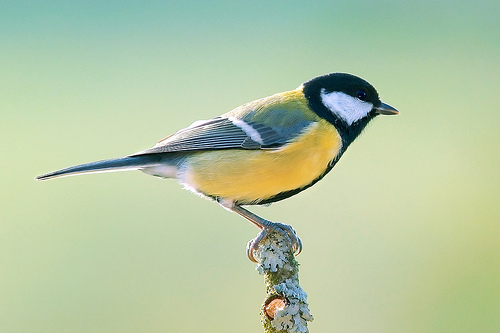
Mt. Takao is known as one of the three (3) major habitats of insect in Japan along with Mt. Minoo in Osaka and Mt. Kibune in Kyoto.
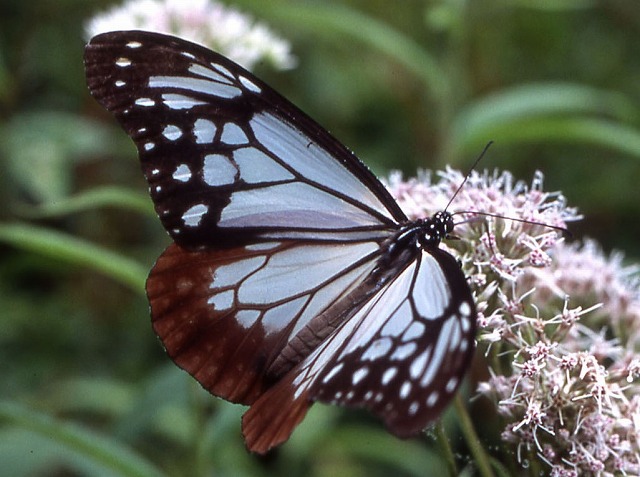
All these mountains are located closely to large cities while all of them are regarded as sacred mountains.
Can it be just coincidence?
Among the 28 kinds of mammal, a Japanese giant flying squirrel that is native to Japan is another symbol of Mt. Takao.

Unfortunately, as they are nocturnal animals, you can rarely see them in the daytime if not impossible while you might take a guided night tour to watch them in the summer season.
Having said that, everybody can see a couple of their bronze statues in front of the Kiyotaki Station of Takaotozan Cable Car at the foot of the mountain.

These are the life-sized statues of Japanese giant flying squirrels.
As you see, it has a web of skin between its legs which it uses to glide between trees.
It has also a long thick tail which it uses as a rudder and stabilizer when it glides.
Mt. Takao is the home of Japanese giant flying squirrels.
Their main territory is around the grounds of Yakuo-in Temple located halfway up to the peak of the mountain.
They become active 30 minutes after sunset.
Like some of you, they are fooling around late at night and not coming back home until 30 minutes before sunrise next morning.
So, looks like they are playboys and playgirls.
But, they are actually, like pious Buddhist monks, vegetarians.
They eat leaves of a tree, flowers, pollen, nuts, etc. while some of them are naughty enough to eat snails and insects when they are starving.
When they fly or glide, they climb tall trees and jump.
Their gliding distance is generally about three times as the height of a point of the tree where they jump off and could glide more than 100 meters riding the wind.
If you would like to see them in the daytime, you might try Tama Zoological Park or Ueno Zoological Gardens in Tokyo.
It is also worth visiting TAKAO 599 Museum (https://www.takao599museum.jp/treasures/?lang=en) for more information about them and the rich biodiversity of Mt. Takao.
Some of you may notice that at Mt. Takao there is a monkey park located right before you see the legendary Tako-sugi (Octopus Cedar Tree) where some 90 Japanese monkeys live in a group and you can see them up close.

In fact, this Monkey Park started in 1971 with a group of 20 Japanese monkeys coming from “Shimane” prefecture.
So, they are not native to Mt. Takao but “immigrants” all the way from “a rural area” of the western part of Japan.
The Monkey Park is still very popular, especially, among children and famous for park attendants who present humorous talk shows about rules and daily life of monkey society and answer any questions you might have while their talk shows are unfortunately conducted only in Japanese.
Each monkey has his or her own name and is full of character.
It should be noted that Japanese monkeys live in the northernmost part of the habitat of all the monkeys and apes in the world.

As you understand, Mt. Takao is a sacred mountain associated with Shugendo which could roughly be described as the fusion of mountain worship derived from Shinto, the indigenous religion of Japan and Buddhism.
You could say that this is another reason for the rich biodiversity of Mt. Takao.
That is, there is a stone monument located on the left side on Trail 1 just after going through Joshin-mon Gate on the way to the peak of the mountain.
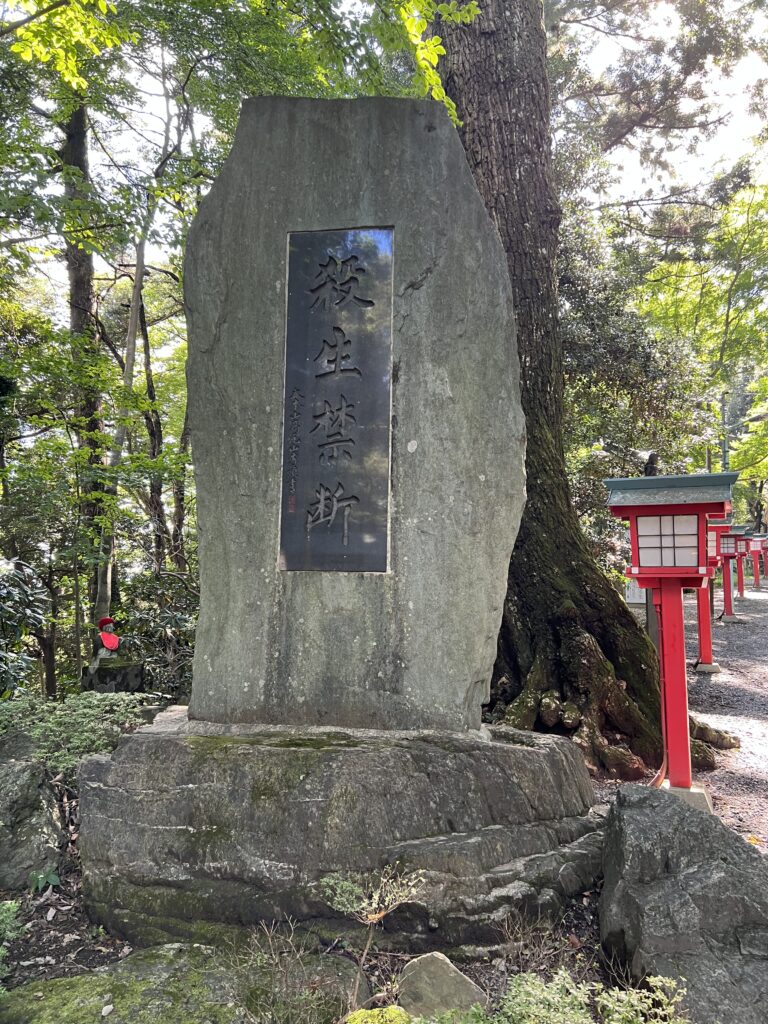
This stone monument declares that shooting and fishing are prohibited within this sacred area.
Prohibition on shooting and fishing is one of the very important Buddhist teachings.
In fact, before the Meiji Restoration, most of the Japanese people didn’t have the practice of eating animal meat while meat diet is considered to have been very common in Japan before the introduction of rice cultivation and Buddhism.
It should be noted that in Japan as offerings to a god or Buddha animal meat has generally been excluded unlike some other countries in the rest of the world.
The bottom line is that Japanese people avoided eating the meat of animals that have multiple legs.
Eating the meat of animals that have four legs such as ox, pig, sheep, etc. was put under taboo.
Birds are OK since they have just two legs.
Fish is no problem as they have no legs.
So, in this context, the meat of whale or dolphin should be no problem at all.
In fact, due to the nature of their line of business, hunters in mountainous areas were in practice allowed to eat the meat of wild animals such as wild boars, deers, etc.
Having said that, some of more religious or superstitious hunters called wild boars “mountain whale” to justify their eating habits.
With the advent of the Meiji Restoration, the Japanese people’s eating habits changed dramatically and eating beef became a symbol of modernization and Westernization of Japan.
As I mentioned in the post titled “Rich Biodiversity of Mt. Takao – Flora”, even after the Meiji Restoration, this area has been preserved as Imperial Forest and now as National Forest.
Having said that, in the early 2010s, the national government constructed tunnels for the Metropolitan Inter-City Expressway more commonly known as the Ken-O Expressway through Mt. Takao and Mt. Fukazawa in the latter of which Hachioji Castle Ruins are located.
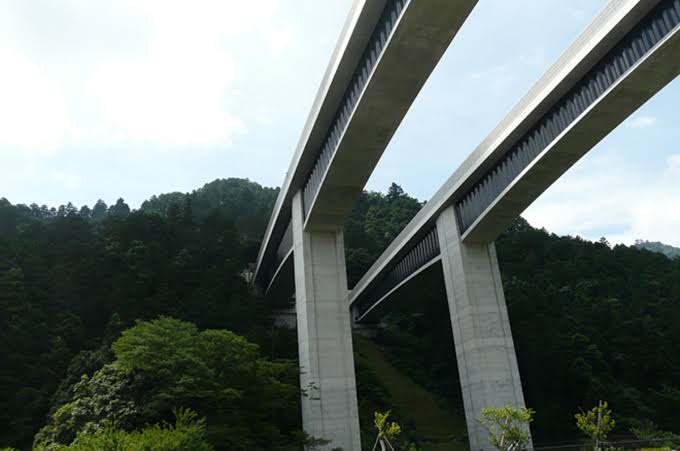
In fact, there was a protest movement against the construction of Takaosan Tunnel because underground water vein could be cut off causing ecological destruction.
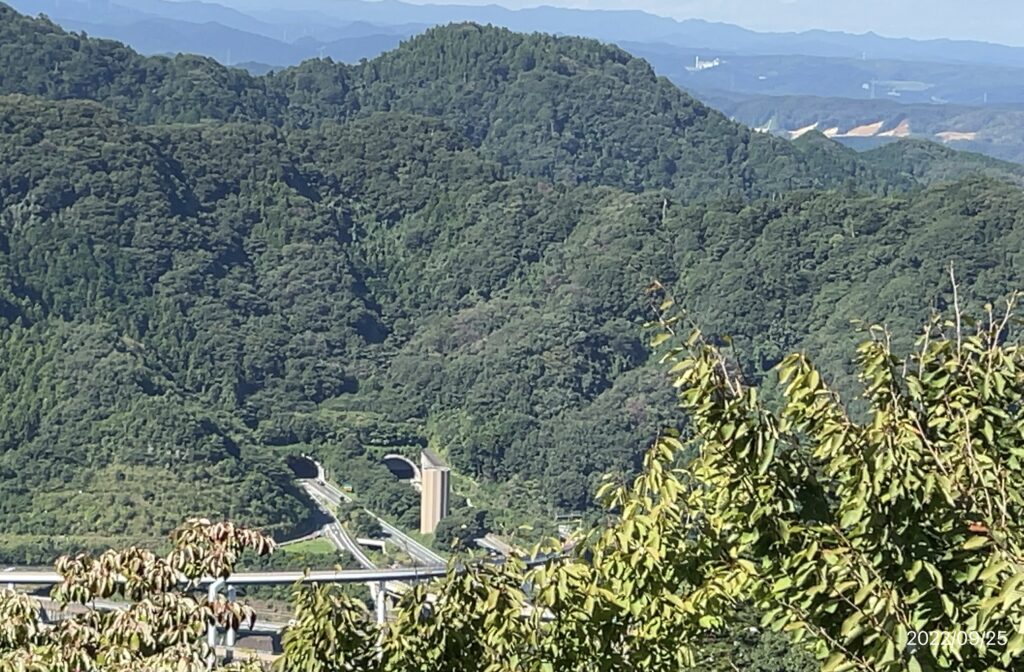
There was the campaign to collect signatures against the construction of the tunnel to no avail.
According to the environmental assessment made in advance, the environmental impact of piercing Mt. Takao with the tunnel would not be a too significant one which appears to have worked as something like a “Get Out of Jail Free card” or a sort of “indulgence”.
Further, it is understood that in order to prevent or minimize any potential ecological destruction, some special construction methods such as a shield tunneling method was adopted in the course of the construction of the tunnels.
The bright side of the construction of the Takaosan Tunnel if any is that it as a part of the Metropolitan Inter-City Expressway has the effect of significant reduction in traffic congestion by connecting the entire length of the technology advanced metropolitan area, an inland industrial region covering an area of 3,000 square kilometers without going through the central part of Tokyo and also has the resultant positive economic effect.
What is now happening to the natural environment here?
I would not be surprised if there should be any negative impact on the natural environment surrounding Mt. Takao while it may still be a little too early to say anything definite.
Hopefully, the construction of the Takaosan Tunnel should not end up being a regrettable event from the perspective of preservation of natural environment even from a long term perspective.
